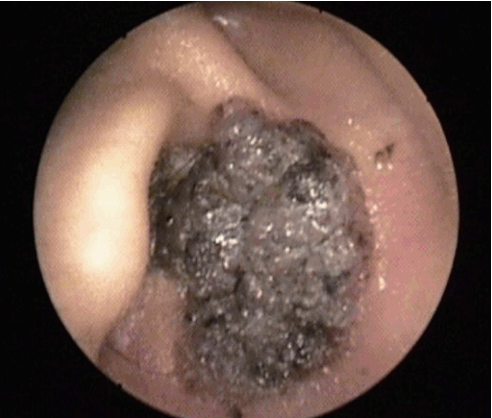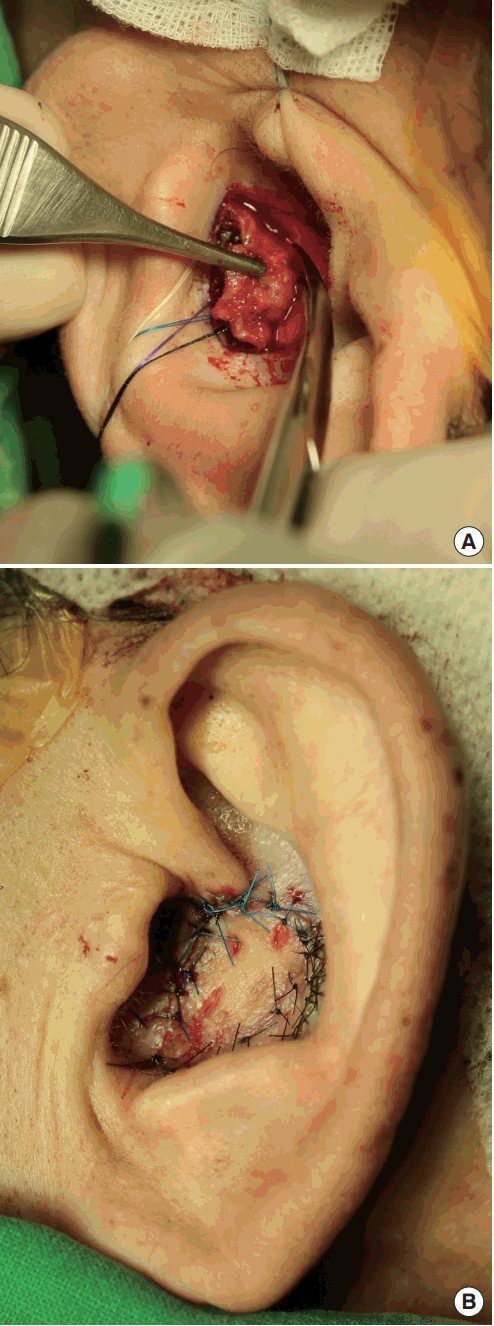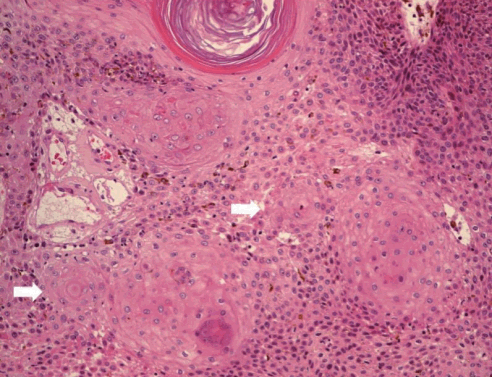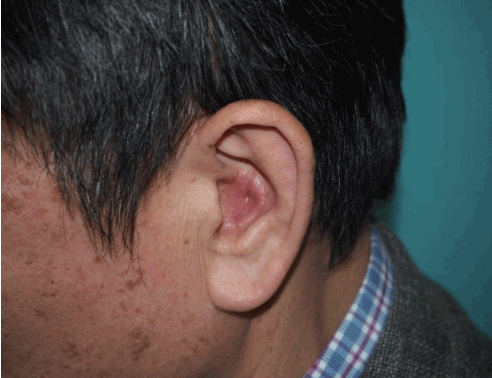Seborrheic keratosis (SK) is commonly observed throughout the body, except the palms and soles [1]. However, SK in the external auditory canal (EAC) is rare [2,3]. In this report, we describe a case of SK in the EAC.
A 56-year-old man presented to our outpatient plastic surgery clinic with a 1-year history of a slow-growing, painless mass in his left auricle. In the physical examination, we observed a 2.5-×2.0-cm blackish papillomatous lesion within the left cavum concha, extending into the EAC (Fig. 1). There was no palpable enlargement of the regional lymph nodes. An incisional biopsy was performed to rule out a malignant skin tumor, and the histopathological examination revealed SK. Subsequently, an excisional biopsy was performed (Fig. 2A). The EAC and cavum concha were reconstructed with a full-thickness skin graft taken from the retroauricular region (Fig. 2B). The second histopathological examination confirmed the final diagnosis of the irritated subtype of SK, without evidence of malignancy (Fig. 3). At a 6-month follow-up visit, no recurrence was noted (Fig. 4).
Histopathologically, SKs are classified into 7 histological subtypes: acanthotic, hyperkeratotic, adenoid, clonal, bowenoid, irritated, and melanoacanthoma [1]. The acanthotic subtype is the most common [1]. However, in our patient, the histopathological examination confirmed the irritated subtype of SK, which rarely arises in the EAC [2]. To our knowledge, only 4 cases of the irritated subtype of SK in the ear have been presented in the English-language literature.








